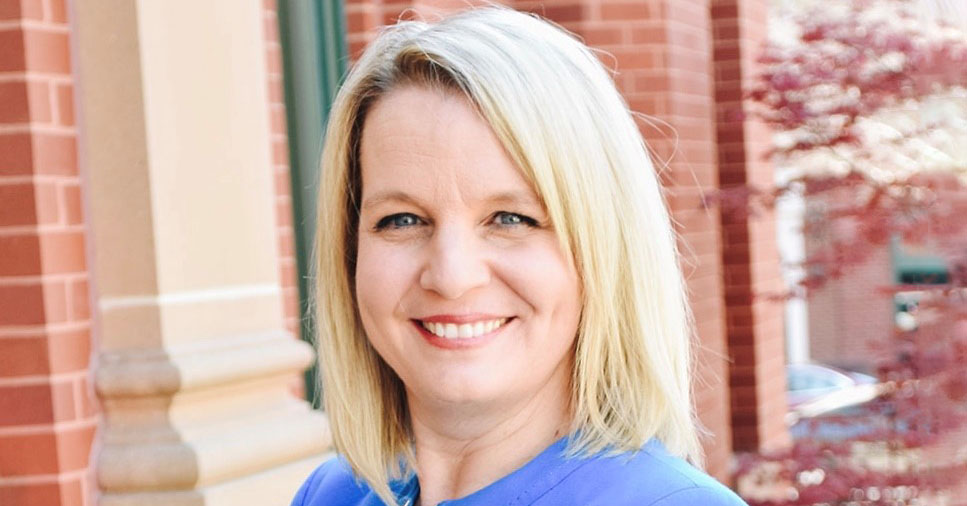
While COVID-19 has caught America off-guard in many ways, one of the most significant
is our nation-wide shortage of personal protective equipment (PPE)—something that
is already affecting West Texas.
Created in 2003 to support public health threats, the United States has a repository
of medical supplies designed for disasters and pandemics, known as the Strategic National
Stockpile (SNS). How, then, have we reached such a critical shortage so quickly?
“The US Strategic National Stockpile was intended to supplement available supplies
and resources—not be the sole source for all 50 states and US territories,” says Amy
Anderson, DNP, RN, an alumni of Texas Tech University Health Sciences Center (TTUHSC)
and assistant professor for the schools of Nursing and Medicine at Texas Christian
University (TCU). “Without anything to draw on and with the unknown of how a virus
will impact people, it would be difficult to determine how many of what supply would
be needed.”
Anderson, co-founder of the Global Nurse Consultants Alliance, explains that there
are several elements which contribute to the country’s current supply shortage, including
the overseas manufacturing of necessary pieces of equipment.
“During the initial outbreak in China, the Chinese government shut down approximately
30 percent of manufacturing to contain the virus. This impacted the global supply,”
says Anderson. “China itself was reserving medical supplies for its own country while
importing millions of N95 masks from other countries.”
By the time the severity of the outbreak was understood on an international level,
a global depletion of supplies was underway.
In response to this shortage, American-based manufacturers of safety supplies, notably
3M and Honeywell, are ramping up production. On March 23, 3M CEO Mike Roman spoke
with CNBC, stating that the company has already started the process of doubling their
production from 19 to 35 million respirators a month.
Health care professionals are currently utilizing their resources to the best of their
abilities. Already, local departments and businesses are working together to create
new supplies using cutting-edge technology such as 3D printing. Additionally, the
Journal of the American Medical Association (JAMA) has available online discussions
where professionals can collaborate on ideas to maximize the use of PPE and conserve
the current supply.
Despite these attempts, experts say that, given the rapid rate of spread, these efforts
cannot meet the ever-growing needs of our health care system.
“This will likely not be enough,” says Anderson of 3M’s projected manufacturing rate.
“Health professionals need manufacturers to work around the clock to get personal
protective equipment made and distributed here in the US.”
“Without mitigation and containment strategies such as staying at home, lockdown or
quarantine,” Anderson explains, “the number of individuals in a community with the
virus needing direct care may outpace the ability of manufacturers to meet the demand
for medical supplies for our frontline workers.”
Amid shelter-in-place orders across the country, Anderson feels that some people—particularly
young, healthy individuals—might not yet grasp the severity of the situation.
“With the reports that the virus is impacting the elderly and those with pre-existing
conditions disproportionately… it is likely that people don’t truly understand the
risk,” says Anderson. “At one point this week, it was being reported that almost half
of the cases in intensive care units in New York City were people under the age of
55—many of them healthy younger adults.”
While social distancing might not be the easiest strategy to implement among people
who do not understand the severity of their adherence, Anderson has hope that a new
shift toward education about the virus can create change.
“The work of our state leaders, public health officials, and the White House COVID-19
Task Force seems to have been focused on education over the last week,” says Anderson.
“I am hopeful that people who aren’t following the guidelines are learning how severe
this illness can be and why they need to stay home—if not for themselves, then for
their friends, families, neighbors and our health professionals.”
In addition to encouraging the spread of education of the public about COVID-19, Anderson
points out that health care and government officials are actively understanding more
about the spread as COVID-19’s global activity continues.
“Public health officials and medical experts are reviewing procedures from all over
the world to determine what we can do here in the US to prevent deaths. This is why
we have seen lockdowns in certain states and stay-at-home orders being issued in others,”
says Anderson. She emphasizes that measures such as testing, isolation, containment
and contact tracing have been effective in countries such as Taiwan and South Korea.
China also took additional measures to lock down entire cities.
Despite the desperate need for strategic caution, Anderson clarifies that this does
not mean stocking up on necessary medical supplies for your personal use. In fact,
those who already have access to these resources might consider donating to local
health care professionals right away.
“Health professionals need these supplies however they can get them. At this point,
while we would prefer them to come from medical manufacturers, the benefits of having
the appropriate protection is more important than where it came from,” Anderson says.
“The public and businesses need to donate these supplies to local hospitals immediately
for the sake of our frontline workers, and to ensure nurses, doctors and other healthcare
workers are protected so they can continue to provide the best care.”
For those who cannot donate supplies, there is still a vital resource that individuals
can provide our health care system: time.
More time allows for more understanding, more strategies and more resources—which
means that slowing the spread is paramount.
“What we need is time to ramp up manufacturing and get the supplies and equipment
to hotspot areas,” Anderson urges. “We must ‘flatten the curve’ to improve the situation.”
